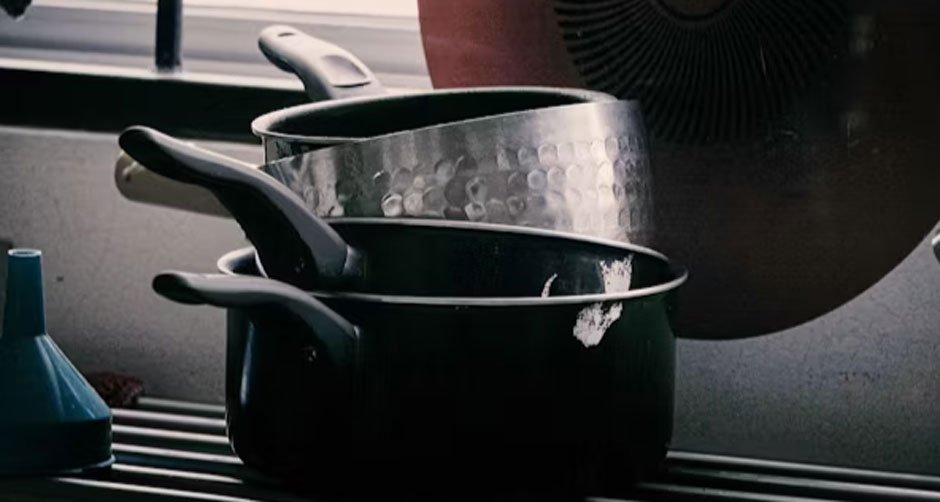There’s something profoundly transformative about walking into a home that feels intentionally designed for wellbeing. It’s not about perfection or following every design trend—it’s about creating spaces that naturally encourage healthier choices, better routines, and a genuine sense of calm. Your home environment has a remarkable influence on everything from the meals you prepare to the self-care habits you maintain, and understanding this connection can completely reshape how you approach both design and daily living.
The modern wellness movement has taught us that health isn’t just about gym memberships and diet plans. It’s woven into the fabric of our everyday environments, particularly in the spaces where we start and end each day. When your home supports rather than hinders healthy habits, everything becomes easier. The kitchen that invites cooking instead of takeout ordering. The bathroom that makes morning routines feel like self-care rather than a rushed necessity. These aren’t small details—they’re the foundation of sustainable wellness.
Why Your Kitchen Deserves a Wellness-First Approach
Let’s be honest: most of us drastically underestimate how much our kitchen design affects our actual eating habits. A poorly lit, cramped, or outdated kitchen doesn’t just look uninviting—it actively discourages cooking. When prepping a simple meal feels like navigating an obstacle course, it’s no wonder people reach for their phones to order delivery instead.
The kitchen renovation conversation has shifted dramatically in recent years. Where homeowners once prioritized aesthetics above all else, there’s now a growing recognition that functionality and wellness should drive design decisions. This means thinking carefully about workflow, air quality, lighting, and how the space actually supports daily cooking rather than just looking good in photos.
Consider the psychological impact of your cooking environment. A kitchen filled with natural light, adequate counter space, and proper ventilation creates an entirely different experience than a dark, cramped space with poor airflow. When you enjoy being in your kitchen, you’re more likely to cook fresh meals, experiment with new recipes, and involve family members in food preparation—all behaviors strongly linked to better nutrition and family connection.
For those considering updates to their cooking space, working with experienced professionals who understand both design and functionality can make all the difference. Whether you’re planning a complete overhaul or targeted improvements, specialists in kitchen renovations Melbourne and beyond can help translate wellness priorities into practical design solutions that work for your specific space and lifestyle.

The Often-Overlooked Element: Air Quality and Ventilation
Here’s something that rarely gets discussed in casual kitchen conversations but absolutely should: the air you breathe while cooking matters enormously. When you sauté vegetables, sear meat, or even boil pasta, you’re releasing moisture, heat, and various particles into the air. Without proper ventilation, these accumulate in your kitchen and spread throughout your home, affecting both air quality and comfort.
Poor kitchen ventilation isn’t just unpleasant—it has real health implications. Cooking without adequate extraction can lead to increased humidity, which promotes mold growth. The smoke and fumes from cooking, particularly at high temperatures, contain particles that shouldn’t be lingering in your breathing space. Yet surprisingly, many homes either lack proper ventilation or have systems that homeowners rarely use because they’re too noisy or ineffective.
The solution involves thinking strategically about extraction systems from the start. Modern cooking requires modern solutions, and the technology in this area has improved remarkably. Quality ventilation systems now combine powerful extraction with quieter operation and energy efficiency. When shopping for these systems, look for options that match your cooking style—someone who frequently stir-fries or sears at high heat needs more powerful extraction than someone who primarily bakes and slow-cooks.
Investing in a proper hob and hood combination changes the entire cooking experience. The hood positioned correctly above your cooktop captures steam, smoke, and odors right at the source, before they spread through your kitchen and home. This isn’t just about eliminating cooking smells—though that’s certainly a benefit. It’s about maintaining healthy air quality in the space where you prepare the food that fuels your body. When your ventilation system works efficiently, you can cook without windows wide open in winter, without coating your walls in grease film, and without that lingering smell of last night’s salmon permeating your curtains.

Designing for Cooking Success: The Details That Matter
Beyond ventilation, the small details in kitchen design have outsized impacts on whether you actually use the space for healthy cooking. Storage placement, for instance, dramatically affects behavior. When healthy staples like whole grains, nuts, and spices are visible and easily accessible, you’re more likely to incorporate them into meals. When they’re buried in back cabinets, forgotten and expiring, you’ve essentially designed convenience out of healthy choices.
Lighting deserves particular attention. Task lighting over prep areas isn’t just helpful—it’s essential for safety and enjoyment. Natural light, where possible, transforms a kitchen from a purely functional space into one where you want to spend time. If your kitchen lacks windows, thoughtful artificial lighting design can compensate, using layered lighting to create both functionality and ambiance.
Counter space is another non-negotiable element for encouraging home cooking. When you need to clear clutter just to chop vegetables, cooking becomes a chore before you’ve even started. Adequate prep space signals to your brain that cooking is manageable and welcome, not another source of stress in an already busy day.
The organization of your cooking tools also matters more than you’d think. When the tools you need are logically placed and easy to grab, cooking flows smoothly. When you’re constantly searching for the right pan or the vegetable peeler, frustration builds. This is why kitchen design should be deeply personalized—your cooking style, your most-used tools, and your typical meal prep routine should all inform where things live.
Creating Wellness Rituals Beyond the Kitchen
While the kitchen often takes center stage in home wellness discussions, the habits we maintain in other spaces are equally crucial. The bathroom, in particular, becomes a daily checkpoint for personal care routines that signal self-respect and attention to health. Morning and evening rituals performed in this space set the tone for how you move through your day.
Think about the wellness routines you’ve heard you “should” do but rarely maintain. Exercise, meditation, healthy eating—these big-ticket items get all the attention. But what about the smaller, daily practices that compound over time? Consistent oral care is one of those unsexy but genuinely important habits that many people struggle to optimize, not for lack of caring, but because the tools or routine don’t fit seamlessly into daily life.
The interesting thing about personal care habits is how much they benefit from the right tools. Just as a well-designed kitchen encourages cooking, the right bathroom products can transform tedious tasks into satisfying rituals. When something is genuinely easy and pleasant to use, consistency becomes natural rather than forced.

Making Wellness Sustainable Through Environment
The common thread connecting kitchen design and personal care routines is this: your environment should work with you, not against you. Too often, we blame ourselves for failing to maintain healthy habits when the real culprit is an environment that makes those habits unnecessarily difficult. When cooking healthy meals requires navigating a dysfunctional kitchen, or when oral care is just cumbersome enough to skip when you’re tired, these aren’t personal failures—they’re design failures.
The homes that best support wellness don’t necessarily require massive budgets or complete overhauls. Sometimes it’s about strategic updates: improving ventilation so cooking becomes more pleasant, reorganizing storage so healthy choices are visible and accessible, or investing in tools that transform tedious routines into easier practices.
What matters most is intention. When you approach your living space with genuine consideration for how design and tools affect daily behavior, you start noticing opportunities everywhere. That cramped corner that makes meal prep frustrating could be reconfigured. The bathroom storage that makes morning routines chaotic could be reorganized for better flow. The inadequate lighting that makes cooking dinner after work feel gloomy could be upgraded to something more energizing.
Sustainability in wellness isn’t about perfection or maintaining intense habits through sheer willpower. It’s about creating conditions where healthy choices become the path of least resistance. When your kitchen invites cooking, you cook more. When your oral care routine is genuinely quick and easy, you maintain it consistently. When your home environment supports rather than sabotages your intentions, everything else becomes easier.
The Ripple Effects of Thoughtful Design
The benefits of a wellness-focused home extend far beyond the immediate practical advantages. There’s something psychologically powerful about living in a space that reflects care and intention. When you walk into a kitchen that functions beautifully, or use products that genuinely improve your daily routines, it sends a subtle message to yourself about priorities and self-worth.
This matters particularly in how we model behavior for others in our household. Children who grow up in homes where healthy cooking is normalized, where the kitchen is an inviting rather than stressful space, develop different relationships with food and home cooking. Family members who see consistent self-care practices treated as important rather than optional internalize those values differently.
There’s also the social dimension to consider. A kitchen that works well becomes a natural gathering space, turning meal preparation into a shared activity rather than isolated work. When cooking feels manageable and enjoyable, you’re more likely to invite friends over, to involve kids in food prep, to turn dinner making into connection time rather than a necessary chore to get through.
The wellness benefits compound over time in ways that are hard to quantify but impossible to ignore once experienced. Better nutrition from cooking more meals at home. Reduced stress from environments that function smoothly. Improved health outcomes from consistent personal care. The confidence that comes from living in a space you genuinely enjoy. These aren’t separate benefits—they reinforce each other in a positive cycle.
Practical Steps Toward a Healthier Home Environment
If you’re feeling inspired to evaluate your own space with a wellness lens, start with an honest assessment rather than overwhelming yourself with everything that could be different. Walk through your kitchen as if seeing it for the first time. Is it actually pleasant to cook here? Is the lighting adequate? Does the ventilation work well? Are healthy ingredients visible and accessible?
Do the same mental walkthrough in your bathroom. Are your morning and evening routines as streamlined as they could be? Are the products you want to use regularly easy to access and genuinely effective? What friction points make you skip steps in your routine when you’re tired or rushed?
From this assessment, prioritize based on impact and feasibility. Sometimes the highest-impact change isn’t the most expensive one. Improving lighting, reorganizing storage, or upgrading a key appliance or tool can transform daily experience without requiring full renovations.
When you do tackle larger projects, research thoroughly and choose professionals who understand that functionality matters as much as aesthetics. The prettiest kitchen that doesn’t support actual cooking is ultimately a failure, regardless of how well it photographs. Similarly, the most impressive bathroom that doesn’t make daily routines genuinely easier has missed the point.
Remember that wellness-focused doesn’t mean sterile or clinical. Your home should still reflect your personality and aesthetic preferences. The goal is integration—spaces that are both beautiful to you and genuinely supportive of healthy daily patterns. These objectives aren’t contradictory; in fact, the most successful designs achieve both simultaneously.
Looking Forward: Building Homes That Support Who We Want to Be
The conversation around home wellness continues evolving as we better understand the profound connections between environment and behavior. What once seemed like separate concerns—kitchen design, appliance selection, personal care products—increasingly appear as interconnected elements of a lifestyle approach to health.
The future of home design will likely place even greater emphasis on these connections. We’re already seeing increased interest in air quality monitoring, circadian-friendly lighting, and appliances that support rather than complicate healthy choices. As our understanding of the environment-behavior relationship deepens, expect home design to reflect this knowledge more explicitly.
For now, the opportunity lies in approaching your current space with fresh eyes and a willingness to make changes that genuinely support wellness. This doesn’t require perfection or an unlimited budget. It requires honesty about what’s working, what isn’t, and what small or large changes might make daily life genuinely easier and healthier.
Your home is more than shelter—it’s the physical framework within which you build habits, make choices, and live your daily life. When that framework supports wellness through thoughtful design and strategic tool selection, health becomes less about willpower and more about environment. And that shift, from fighting your surroundings to having them work with you, makes all the difference in building habits that actually last.
The kitchen where healthy cooking feels natural, not forced. The bathroom where self-care routines happen consistently because they’re genuinely easy. The home that quietly encourages better choices simply through how it’s organized and equipped. These aren’t luxury fantasies—they’re achievable realities that start with recognizing how profoundly your environment shapes your daily wellness journey.









